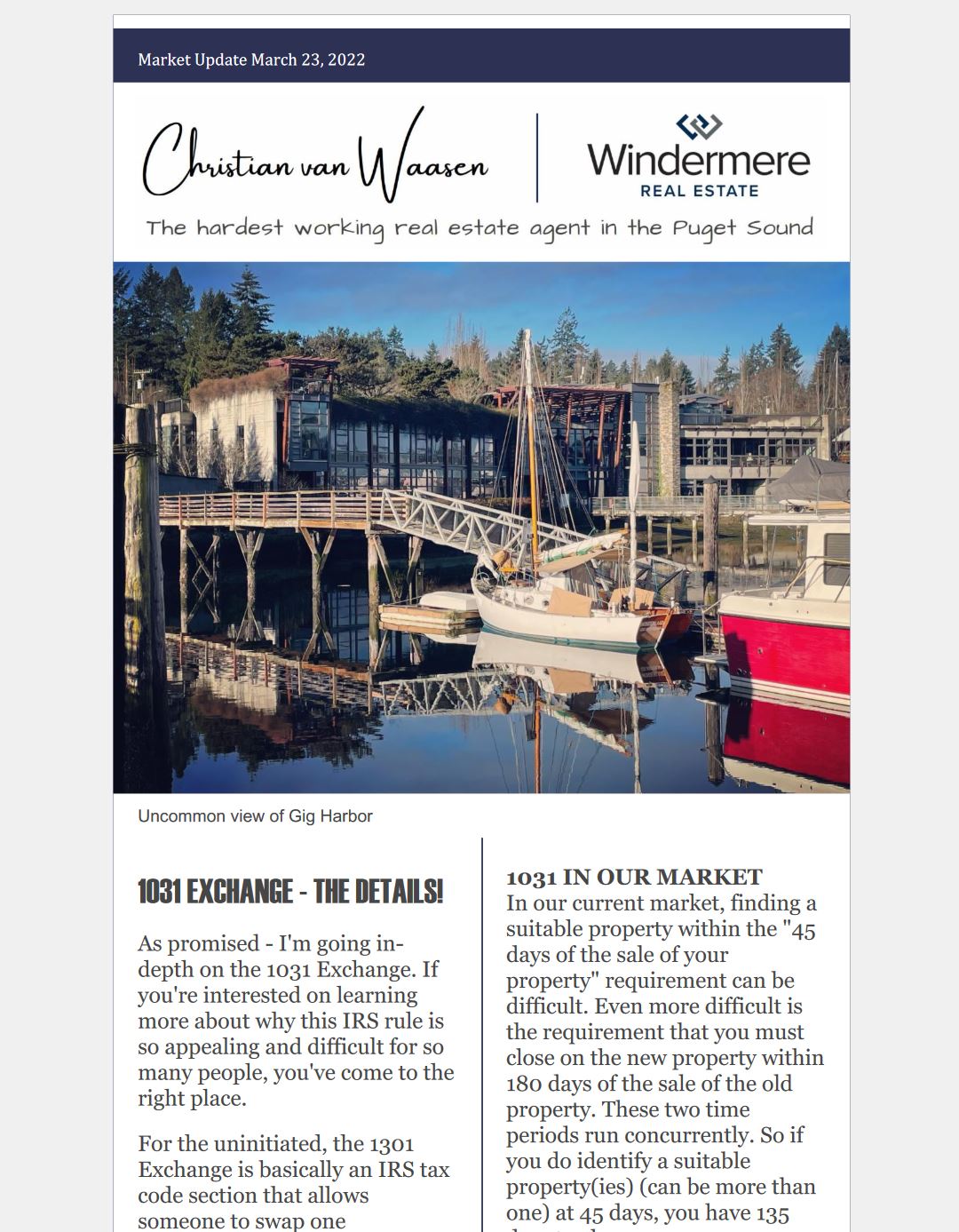
1031 EXCHANGE – THE DETAILS!
As promised – I’m going in- depth on the 1031 Exchange. If you’re interested on learning more about why this IRS rule is so appealing and difficult for so many people, you’ve come to the right place.
For the uninitiated, the 1301 Exchange is basically an IRS tax code section that allows someone to swap one investment property for another (like-kind). By using specific rules set in place by the IRS, one can defer capital gains taxes, potentially indefinitely.
Let’s go over the 7-steps to successfully not pay any capital gains tax when swapping around investment property:
- Step 1: Identify the property you want to sell.
- Step 2: Choose a qualified intermediary for your sales proceeds. (Escrow or law firms can be this intermediary.)
- Step 3: Identify the property you want to buy. (Tell the intermediary, in writing, of your selection)
- Step 4: Decide how much of the sale proceeds will go toward the new property (All, plus additional funds? or only partial?… taxes will need to be paid on the remainder)
- Step 5: Keep an eye on the calendar. (45 days to find, 180 to close *more on this below*)
- Step 6: Be careful about where the money goes. (Money that goes anywhere, besides to your chosen intermediary’s trust account, will be subject to tax! No “if’s”, “and’s”, or “but’s” about it!)
- Step 7: Tell the IRS about your transaction. (File Form 8824 with your tax return. Describe the properties, provide a timeline, explain who was involved and detail the money involved.)
Now that we have the basics covered, how does our currently market impact the 1031 Exchange?
1031 IN OUR MARKET
In our current market, finding a suitable property within the “45 days of the sale of your property” requirement can be difficult. Even more difficult is the requirement that you must close on the new property within 180 days of the sale of the old property. These two time periods run concurrently. So if you do identify a suitable property(ies) (can be more than one) at 45 days, you have 135 days to close.
THE WORK AROUND
One approach that avoids this deadline is by first purchasing an investment property and then selling your other investment property (one that you intended to sell.) This is called a Reverse Exchange.
To qualify, you must transfer the new property to an exchange accommodation titleholder, identify a property for exchange within 45 days, and then complete the transaction within 180 days after the replacement property was bought. In this market, selling your property within the 180 days shouldn’t be too much of a problem.
A COMMON TRAP
One of the main ways that people get into tax trouble with the 1031 Exchange is failing to consider loans. You must consider loans/other debt on the property that you relinquish, as well as any debt on the replacement property. Even if you don’t receive cash back, but your liability goes down, then that also will be treated as income to you, just like cash.
For example: if you had a mortgage of $1 million on the old property, but your mortgage on the new property is only $900,000 – you will have a $100,000 “gain” that will be taxed (this is referred to as the “boot”).
 Facebook
Facebook
 X
X
 Pinterest
Pinterest
 Copy Link
Copy Link


